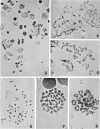Abstract
A family is reported in which infertility affected three men related through their mothers. The propositus, from testicular tissue was obtained, exhibited desynapsis, lack of chiasmata, and degeneration of spermatocytes during the first meiotic division. These observations lead us to postulate that a gene for meiotic disturbance, spermatogenic arrest, and azoospermia is segregating in this family; its mode of inheritance conforms to either an X-linked recessive or a sex-limited autosomal dominant transmission.
Full text
PDF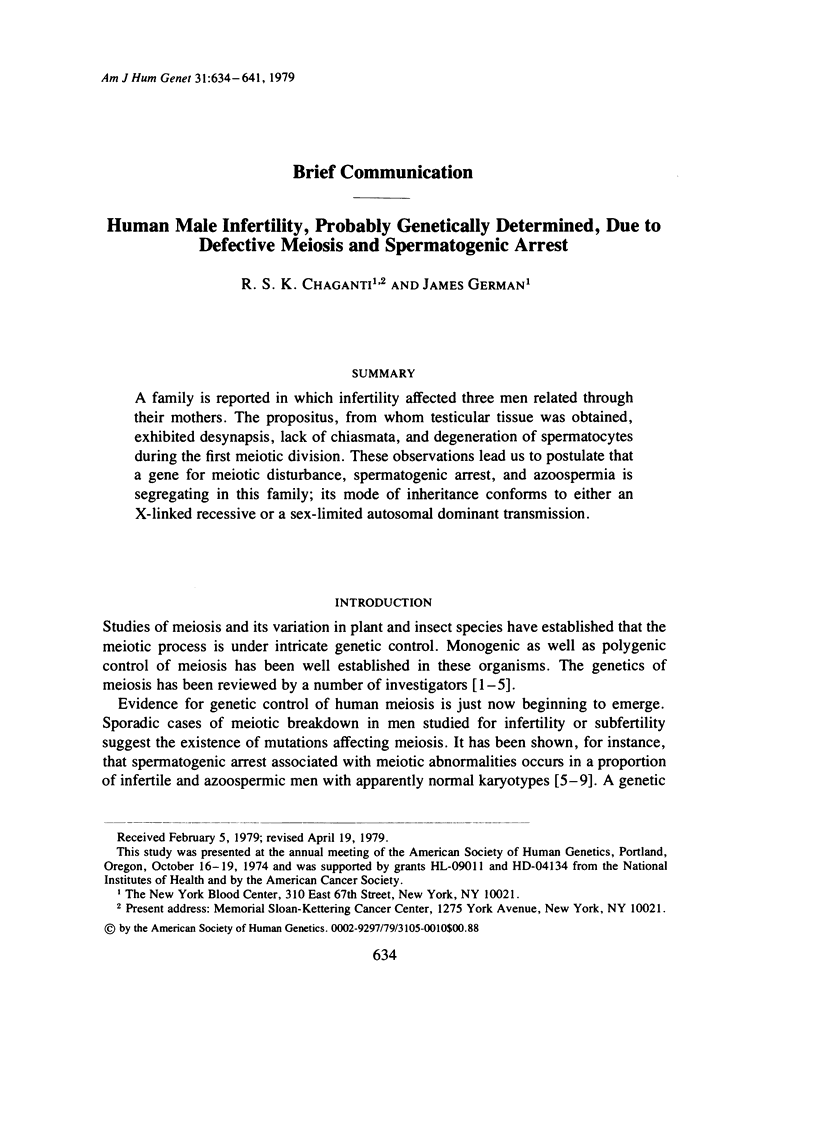
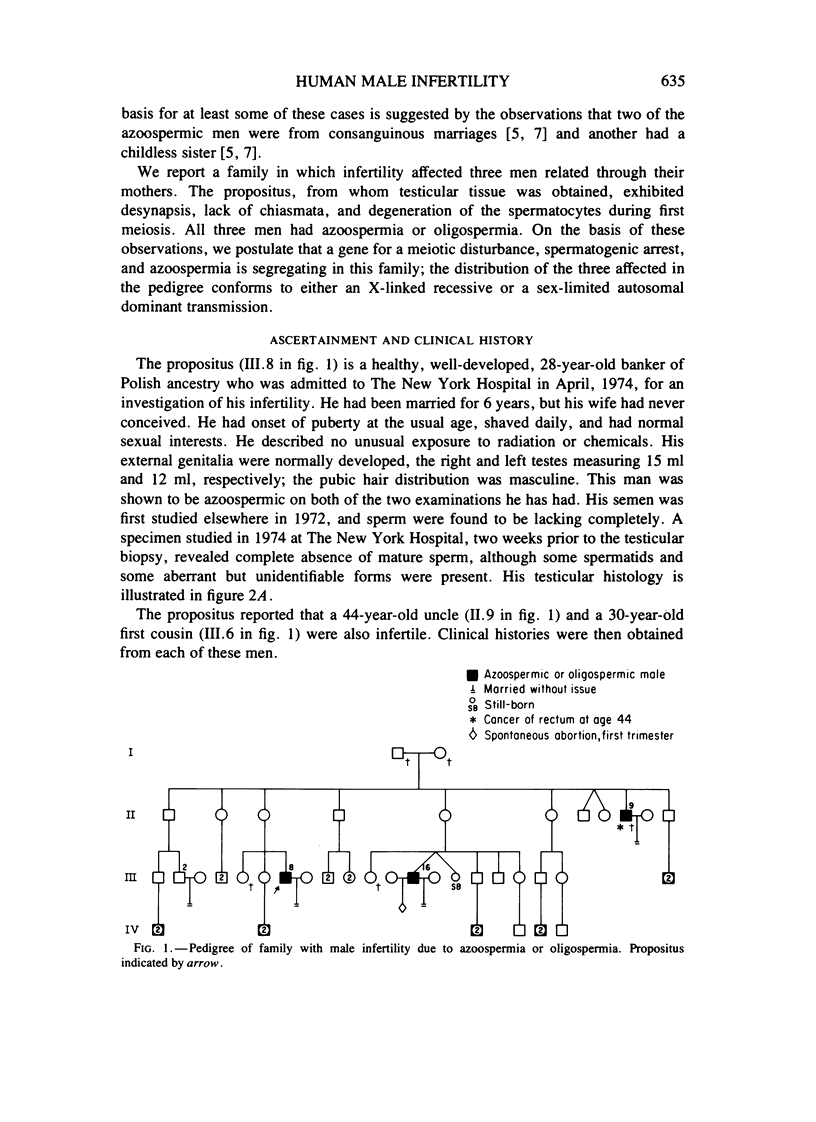
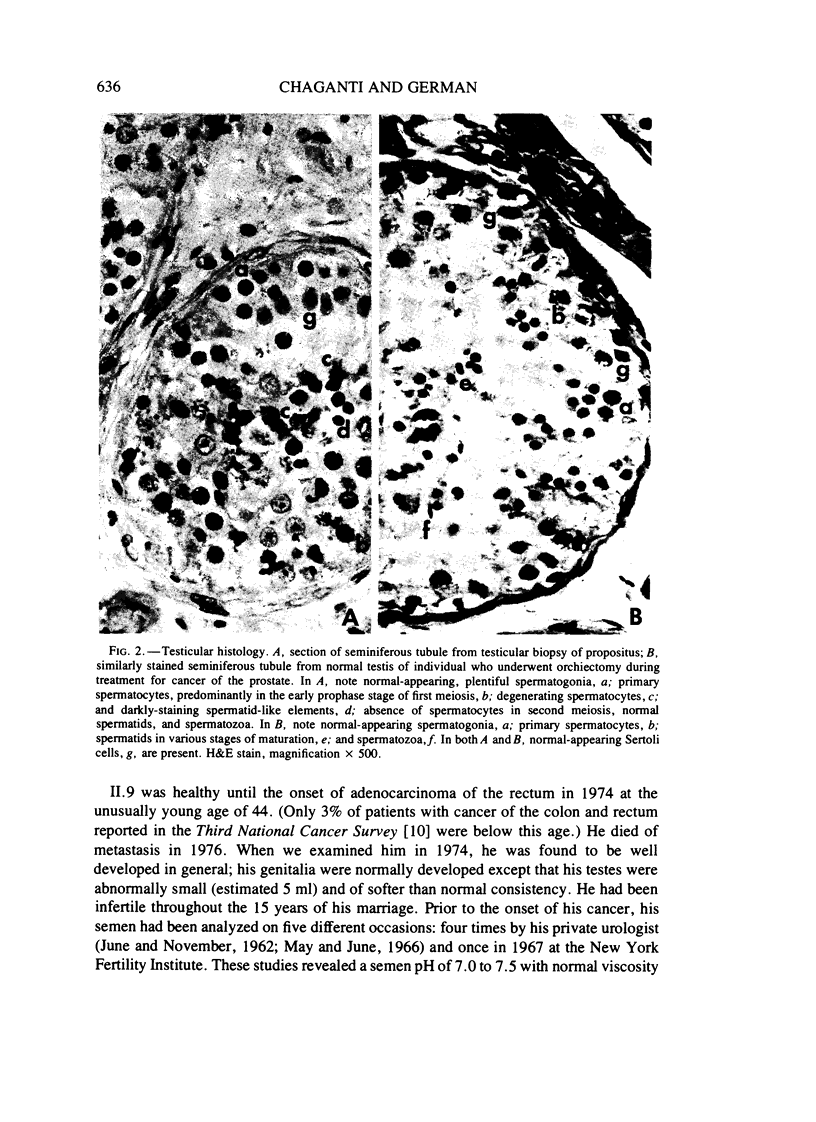
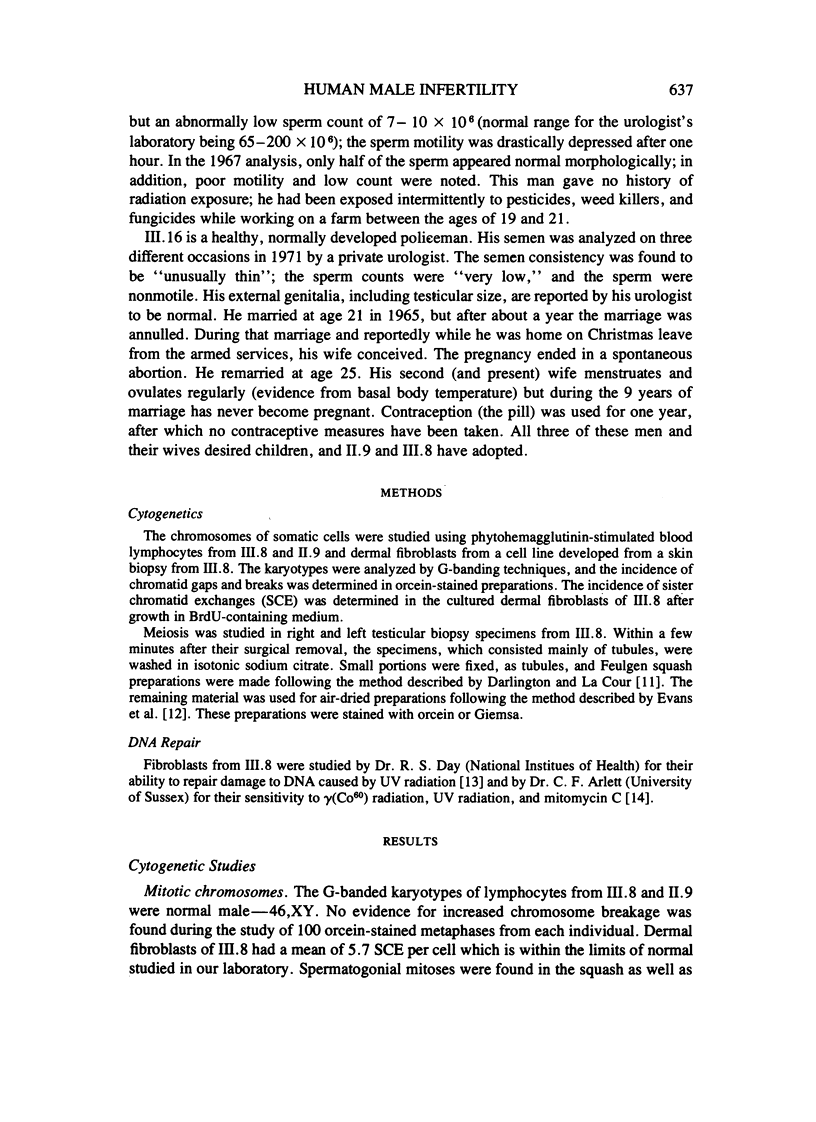
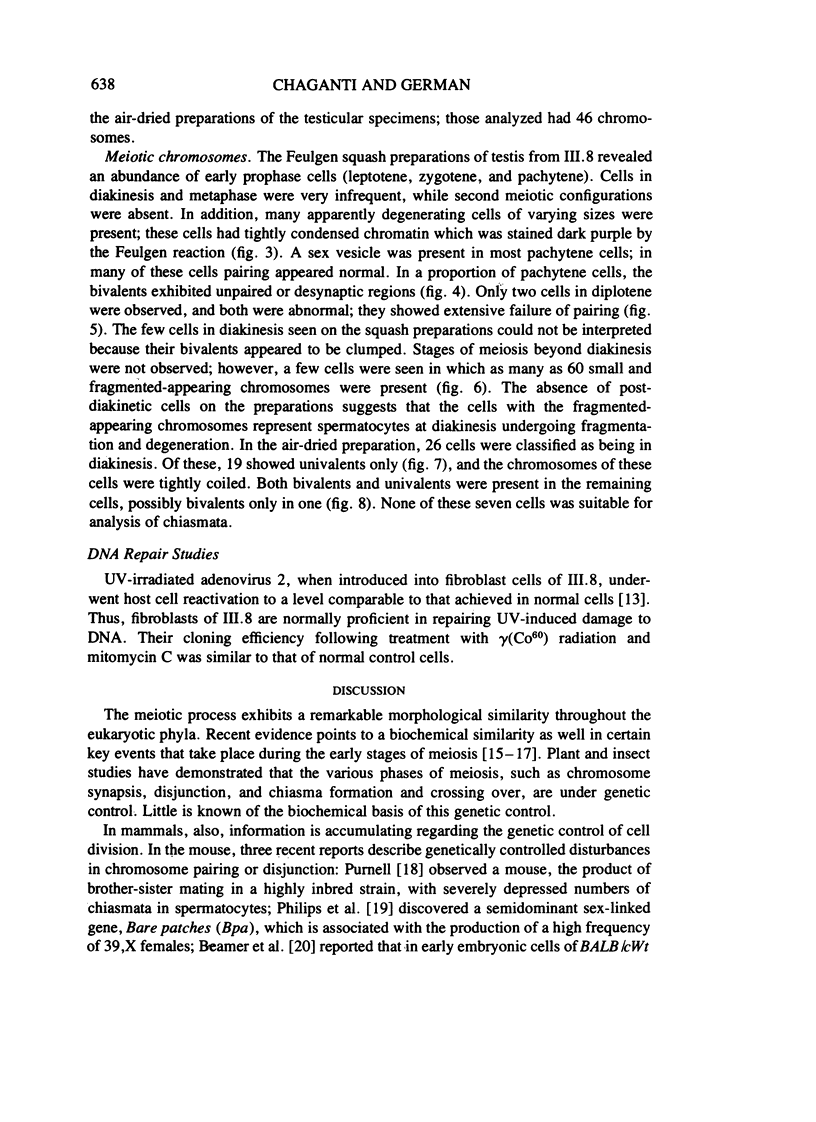
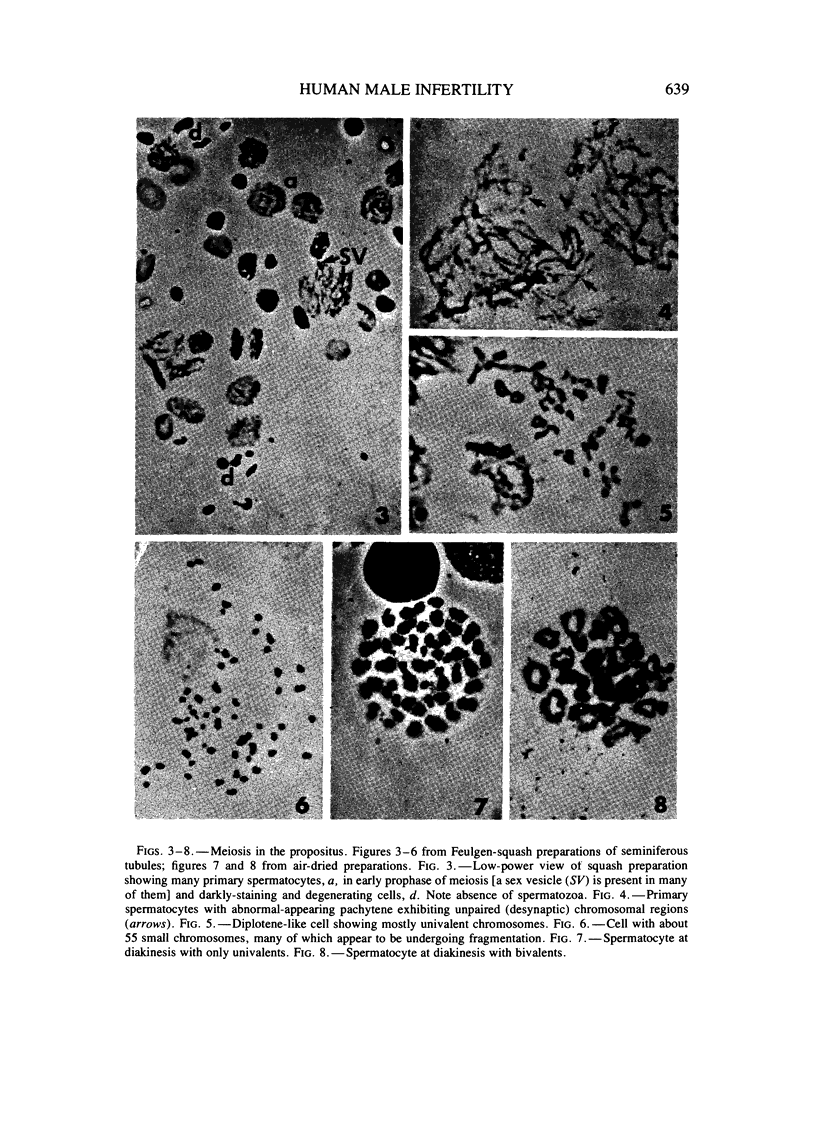
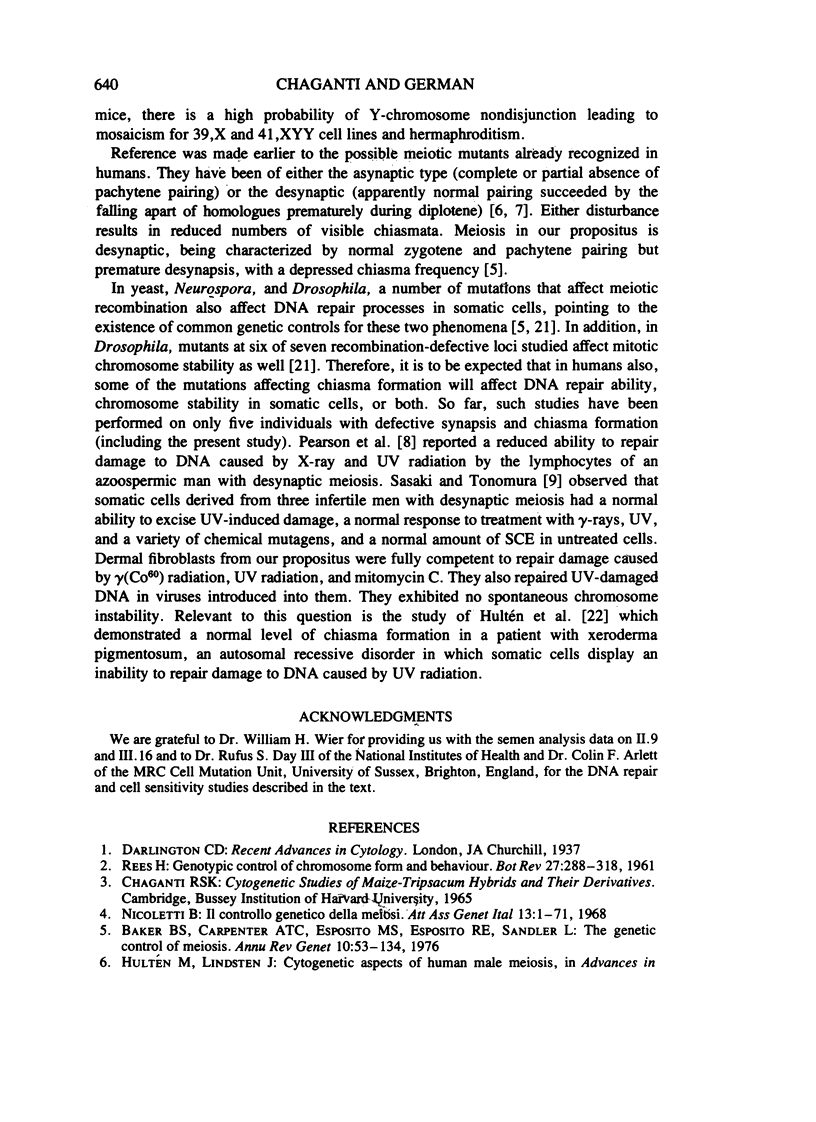
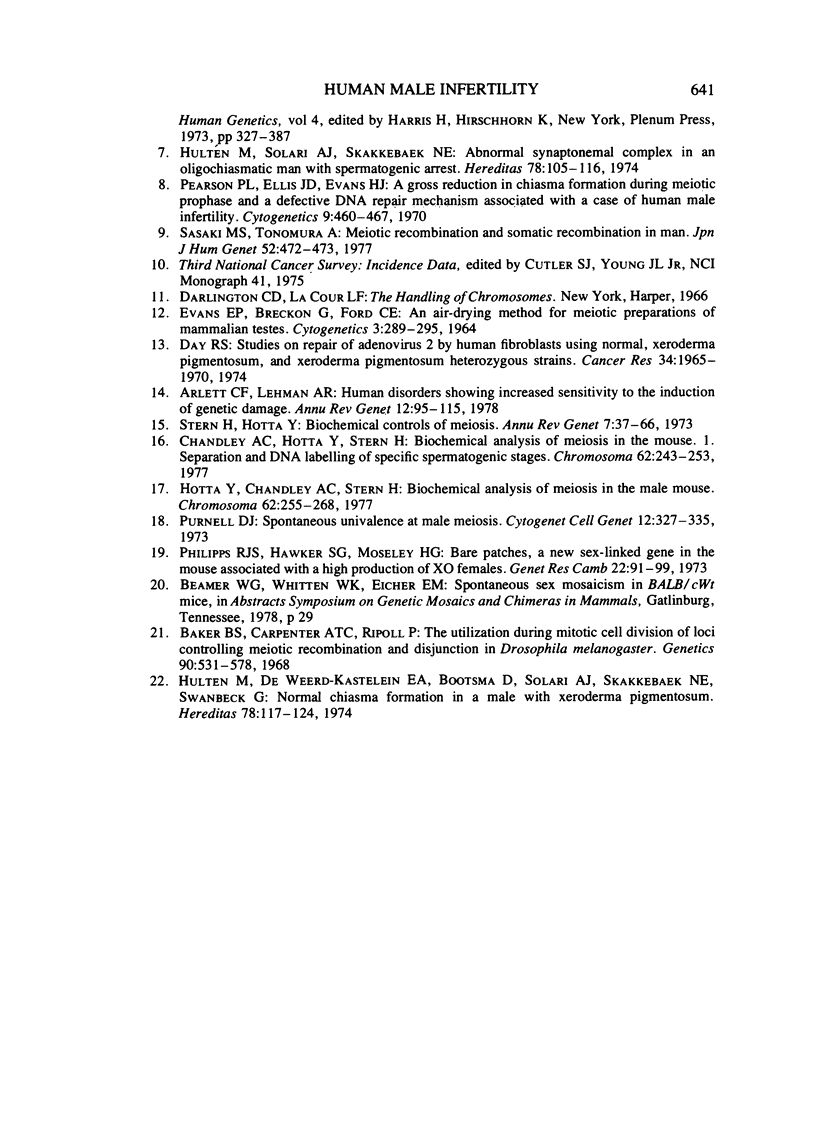
Images in this article
Selected References
These references are in PubMed. This may not be the complete list of references from this article.
- Arlett C. F., Lehmann A. R. Human disorders showing increased sensitivity to the induction of genetic damage. Annu Rev Genet. 1978;12:95–115. doi: 10.1146/annurev.ge.12.120178.000523. [DOI] [PubMed] [Google Scholar]
- Baker B. S., Carpenter A. T., Esposito M. S., Esposito R. E., Sandler L. The genetic control of meiosis. Annu Rev Genet. 1976;10:53–134. doi: 10.1146/annurev.ge.10.120176.000413. [DOI] [PubMed] [Google Scholar]
- Baker B. S., Carpenter A. T., Ripoll P. The Utilization during Mitotic Cell Division of Loci Controlling Meiotic Recombination and Disjunction in DROSOPHILA MELANOGASTER. Genetics. 1978 Nov;90(3):531–578. doi: 10.1093/genetics/90.3.531. [DOI] [PMC free article] [PubMed] [Google Scholar]
- Chandley A. C., Hotta Y., Stern H. Biochemical analysis of meiosis in the male mouse. I. Separation of DNA labelling of specific spermatogenic stages. Chromosoma. 1977 Jul 8;62(3):243–253. doi: 10.1007/BF00286046. [DOI] [PubMed] [Google Scholar]
- Day R. S., 3rd Studies on repair of adenovirus 2 by human fibroblasts using normal, xeroderma pigmentosum, and xeroderma pigmentosum heterozygous strains. Cancer Res. 1974 Aug;34(8):1965–1970. [PubMed] [Google Scholar]
- EVANS E. P., BRECKON G., FORD C. E. AN AIR-DRYING METHOD FOR MEIOTIC PREPARATIONS FROM MAMMALIAN TESTES. Cytogenetics. 1964;3:289–294. doi: 10.1159/000129818. [DOI] [PubMed] [Google Scholar]
- Hotta Y., Chandley A. C., Stern H. Biochemical analysis of meiosis in the male mouse. II. DNA metabolism at pachytene. Chromosoma. 1977 Jul 8;62(3):255–268. doi: 10.1007/BF00286047. [DOI] [PubMed] [Google Scholar]
- Hultén M., Solari A. J., Skakkebaek N. E. Abnormal synaptonemal complex in an oligochiasmatic man with spermatogenic arrest. Hereditas. 1974;78(1):105–116. doi: 10.1111/j.1601-5223.1974.tb01433.x. [DOI] [PubMed] [Google Scholar]
- Hultén M., Weerd-Kastelein D., Bootsma D., Solari A. J., Skakkebaek N. E., Swanbeck G. Normal chiasma formation in a male with xeroderma pigmentosum. Hereditas. 1974;78(1):117–124. doi: 10.1111/j.1601-5223.1974.tb01434.x. [DOI] [PubMed] [Google Scholar]
- Pearson P. L., Ellis J. D., Evans H. J. A gross reduction in chiasma formation during meiotic prophase and a defective DNA repair mechanism associated with a case of human male infertility. Cytogenetics. 1970;9(6):460–467. doi: 10.1159/000130115. [DOI] [PubMed] [Google Scholar]
- Phillips R. J., Hawker S. G., Moseley H. J. Bare-patches, a new sex-linked gene in the mouse, associated with a high production of XO females. I. A preliminary report of breeding experiments. Genet Res. 1973 Aug;22(1):91–99. [PubMed] [Google Scholar]
- Purnell D. J. Spontaneous univalence at male meiosis in the mouse. Cytogenet Cell Genet. 1973;12(5):327–335. doi: 10.1159/000130471. [DOI] [PubMed] [Google Scholar]
- Stern H., Hotta Y. Biochemical controls of meiosis. Annu Rev Genet. 1973;7:37–66. doi: 10.1146/annurev.ge.07.120173.000345. [DOI] [PubMed] [Google Scholar]




